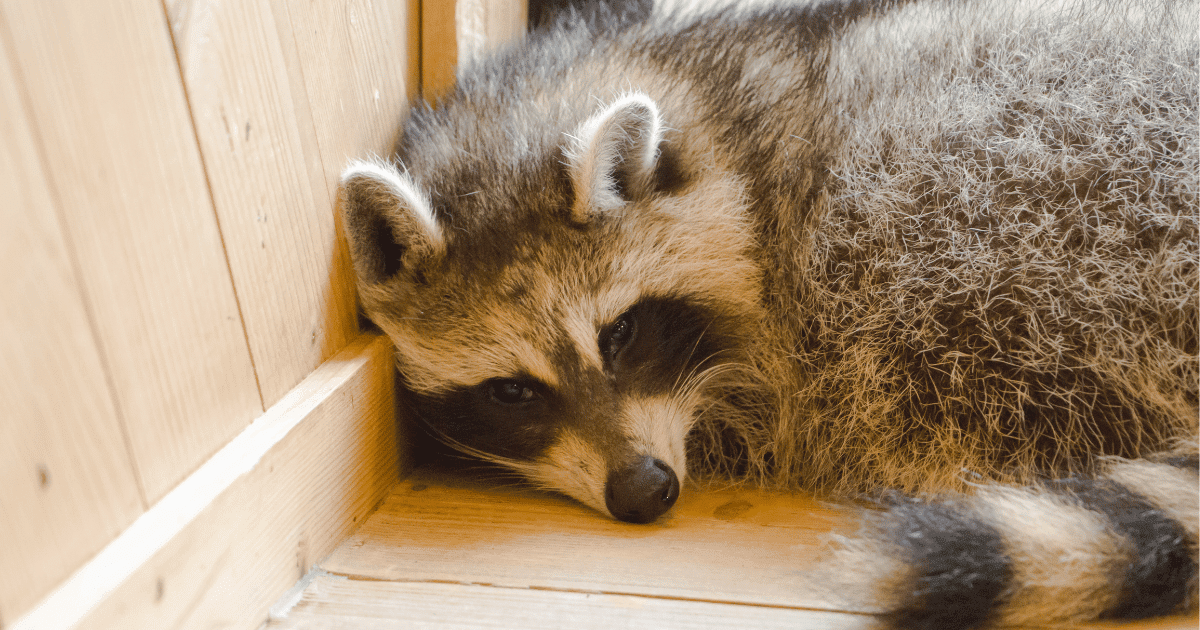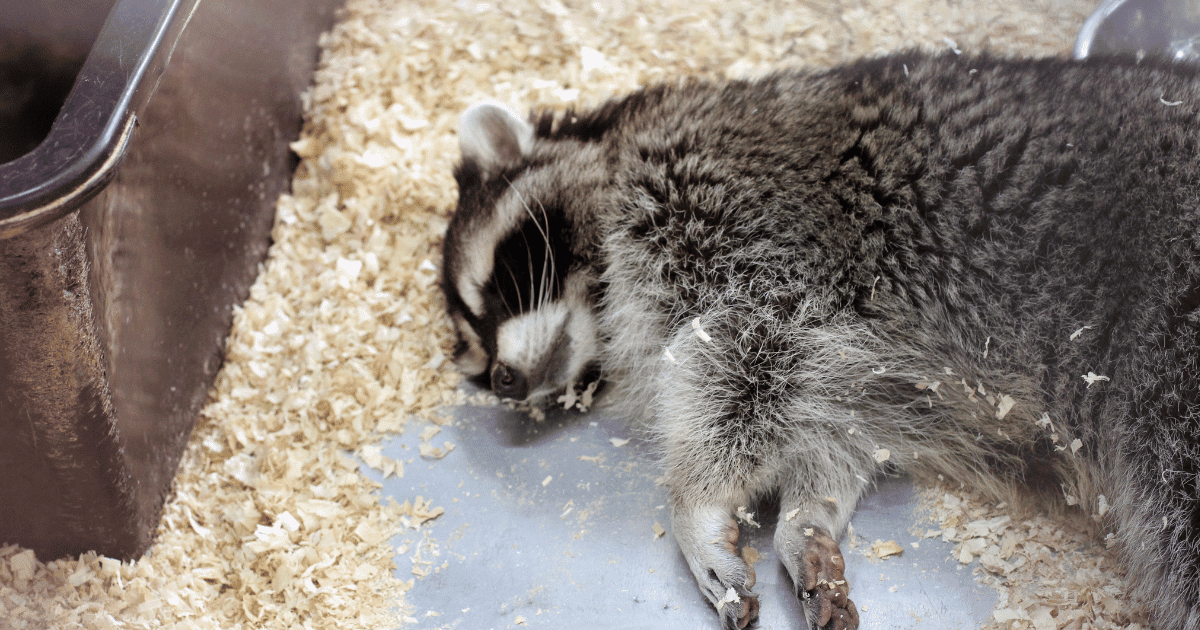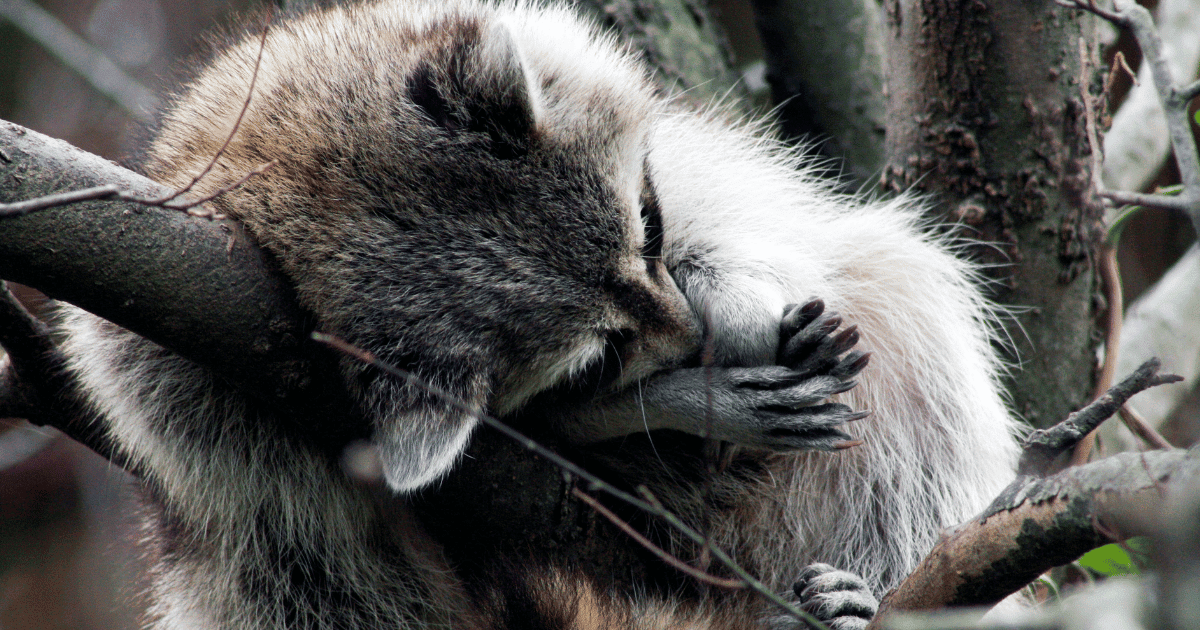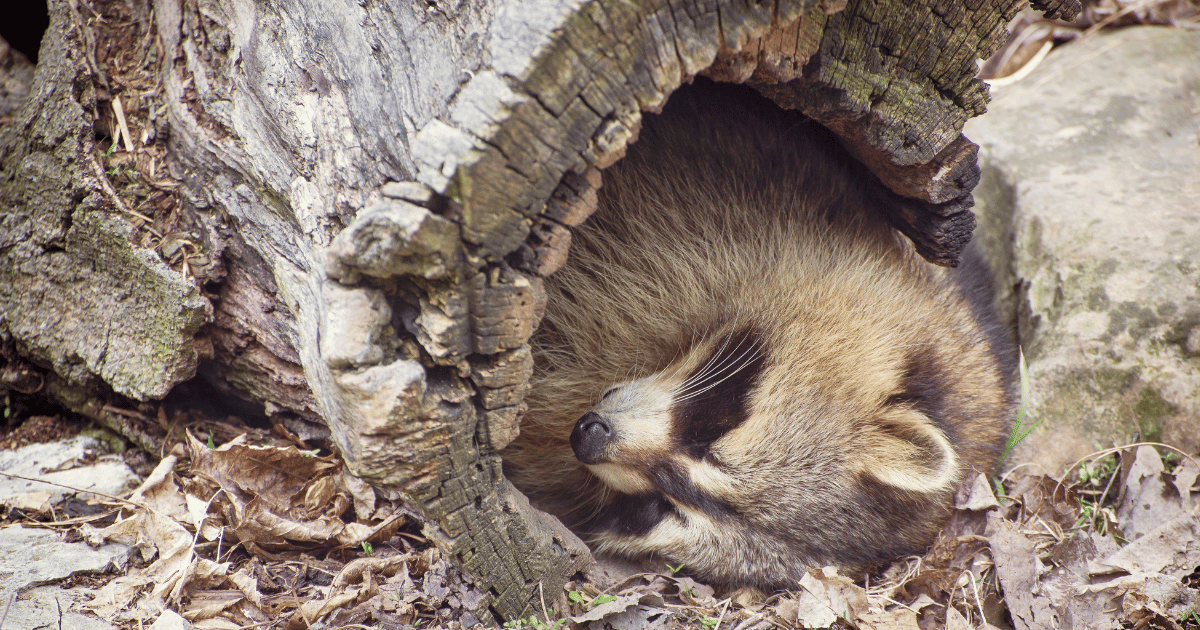Where Do Raccoons Sleep During The Day? Explore the fascinating daytime conduct of raccoons in this comprehensive guide. Learn about their unique sleeping styles in numerous environments, from urban regions to herbal habitats, and discover how these adaptable creatures locate rest and protection far from their nocturnal activities.
Introduction

Discovering the mysteries of the nocturnal natural world may be fascinating, particularly in relation to information on the everyday routines of creatures like raccoons. Raccoons, recognized for their unique masked faces and witty antics, are a not unusual sight in many sector elements. However, their nocturnal nature often ends in the interesting question: “Where Do Raccoons Sleep During The Day?” This article aims to shed light on the daytime resting behavior of these exciting animals, presenting insights for wildlife fanatics and house owners alike. By exploring their behavior and adaptability, we can better appreciate those inventive mammals.
Common Daytime Resting Places for Raccoons
Raccoons are adaptable and may discover many places to sleep in the day. In herbal environments, they often seek hole timber, dense underbrush, or underground caves that protect them from predators and vicious climates. These natural shelters offer the darkness and quiet they need for their sunlight hours shut-eye. Raccoons have become adept at locating unique locations to rest in extra city areas. They may additionally choose attics, abandoned buildings, or comfy spaces in sheds and garages. These city environments offer raccoons several alternatives, making it more straightforward to discover a spot that’s now most effectively secure and close to food assets. Understanding where raccoons sleep is crucial for house owners, flora and fauna fans who desire to coexist peacefully with those nocturnal neighbors.
The Urban Raccoon: Adapting to City Life
Urban environments have become a new frontier for raccoons, showcasing their remarkable adaptability. In cities, these intelligent mammals have been found to navigate the concrete jungle without difficulty, locating new and innovative places to relax all through the day. Beyond the secluded spots in parks and gardens, city raccoons frequently take shelter in less prominent locations like storm drains, rooftops, and even unused chimneys. Their eligibilty to climb and squeeze into small spaces makes buildings especially appealing to them. However, this adaptability often ends in conflicts with people, as raccoons can also inadvertently invade non-public properties in search of a secure daytime retreat. Their presence in city areas highlights the delicate balance between wildlife and human cohabitation, urging metropolis dwellers to apprehend and respect those adaptable creatures’ desires.
The Importance of Safety and Shelter
For raccoons, locating a safe and sheltered vicinity to sleep throughout the day is essential for survival. These wise animals prioritize places that protect them from predators, harsh weather conditions, and human interference. Safety is paramount, as undisturbed rest is vital for their nocturnal sports. Sheltered spots offer bodily safety and contribute to their average well-being, permitting them to conserve power for their active nighttime foraging. In the wild, herbal shelters consisting of hollow logs, tree cavities, and rock crevices are desired. In urban settings, raccoons adapt by searching attics, basements, and different quiet, undisturbed regions. Homeowners ought to be aware of those possibilities to better manipulate their capacity for natural world encounters. Knowing and respecting the raccoon’s want for protection and shelter will limit conflicts and foster a more harmonious coexistence with those charming creatures.
Raccoon Habitats and Sleeping Habits
| Habitat | Sleeping Habits | Adaptability |
|---|---|---|
| Forests | Hollow trees, dense underbrush | High – adapts to natural shelters |
| Marshlands | Underground burrows, sheltered areas near water | High – uses natural landscape features |
| Urban Areas | Storm drains, rooftops, unused chimneys | Very High – adapts to human structures |
| Attics | Secluded, quiet, usually undisturbed by humans | Moderate – depends on human absence |
| Abandoned Buildings | Quiet, dark, and undisturbed places | High – prefers places away from human activity |
Raccoon Sleep Cycles and Behaviors
Raccoons have unique sleep cycles that vary significantly from many other mammals. Nocturnal animals are ordinarily lively at night and spend the daytime resting. This sleep sample permits them to preserve power and stay secure from daylight predators. Raccoons do not have a set sleep agenda; their resting periods can vary depending on meal availability, weather, and human pastimes. During sleep, raccoons input a kingdom of mild shut-eye, ultimate alert to any ability threats or disturbances. This adaptability of their sleep cycle is a vital survival mechanism, especially in cities with frequent disturbances. Understanding these sleep behaviors is crucial for everybody trying to observe or peacefully coexist with raccoons, as it offers perception into their everyday lives and wishes.
Seasonal Variations in Raccoon Sleeping Habits

Raccoons exhibit significant adjustments in their drowsing styles with the converting seasons. During the hotter months, they will be more energetic and spend much less time sleeping during the day. This is partly due to the abundance of meal assets like results and insects, encouraging more excellent middle-of-the-night foraging. Conversely, in chillier months, raccoons often sleep more during the day, holding strength to address decreased temperatures and scarcer meal components. They may even show off a nation akin to inertia, a shape of mild hibernation, throughout excessive bloodlessness. Additionally, their preference for slumbering locations can vary seasonally; they may select sunnier spots in winter for warmth and cooler, shaded regions in summertime. This adaptability in sleep conduct and locations highlights the raccoon’s capacity to thrive in various environmental conditions.
Human Impact on Raccoon Sleep Patterns
Human sports have a sizable effect on raccoon sleep patterns and habitats. Urbanization, particularly, has pressured raccoons to regulate their herbal behaviors significantly. Land development reduces their herbal habitats, pushing them into urban regions where they must adapt to a new rhythm of existence. Noise, mild pollution, and constant human interest disrupt their herbal sleep cycles, often central to elevated nocturnal activities. Moreover, providing food sources like rubbish and puppy meals in urban settings can regulate their foraging conduct, circuitously affecting their sleep styles. These adjustments underscore the significance of understanding human-wildlife interactions, promoting responsible cohabitation, and considering flora and fauna wishes in city planning and improvement.
Protecting Your Home from Daytime Raccoon Visitors
For owners, taking proactive steps to deter raccoons from taking refuge in their houses is crucial. First and foremost, securing capacity entry points like vents, chimneys, and unfastened roof tiles can prevent raccoons from accessing attics or crawl areas. Keeping garbage cans securely closed is also beneficial, as is avoiding leaving puppy food outside, as these can attract raccoons. Installing movement-activated lighting fixtures or sprinklers can also function as a deterrent. However, if raccoons have already hooked up a nesting place, addressing the state of affairs humanely is crucial. Professional wildlife control offerings can effectively relocate the animals without damage. By taking these measures, homeowners can defend their belongings by respecting and coexisting with the neighborhood’s natural world.
Raccoons and Public Health Concerns

While raccoons are captivating creatures, it’s crucial to cope with the general public health issues related to their presence in city regions. Raccoons can be vendors of illnesses consisting of rabies, and their droppings may also comprise dangerous parasites like roundworms. Additionally, they could make contributions to the spread of ticks and fleas. Avoiding direct contact with raccoons and their waste is essential to reduce health dangers. Homeowners must also be vigilant in preventing raccoons from accessing meal sources, which can cause accelerated interactions. In case of a raccoon infestation, expert flora, and fauna control must be contacted to soundly and humanely take care of the situation. Educating the general public about those fitness concerns and promoting accountable flora and fauna control practices are critical steps in fostering a safe coexistence with raccoons.
Understanding and Respecting Wildlife
- Ecological Role: Raccoons play a significant position in their ecosystems, aiding seed dispersal and controlling insect populations.
- Coexistence: Learning to coexist with raccoons includes knowledge of their behaviors and habitats and taking steps to minimize conflicts.
- Ecosystem Benefits: Raccoons contribute to the fitness of their ecosystems and may be a sign of balanced surroundings.
- Observation Tips: Enjoying raccoons from a distance and avoiding direct interaction is critical for safety and respecting their herbal behaviors.
Conclusion:
In conclusion, understanding “Where Do Raccoons Sleep During The Day?” gives a treasured perception of the lives of these adaptable, nocturnal animals. Raccoons’ capability to discover safe and suitable dozing spots across numerous environments, from herbal habitats to city settings, demonstrates their fantastic adaptability. As we share our areas with those creatures, fostering a respectful and knowledgeable coexistence is critical. By expert raccoon conduct and taking suitable measures to live harmoniously with them, we can ensure the proper well-being of both human beings and raccoons in our shared environment.
FAQs
Q: What attracts raccoons to city regions?
Ans: Access to food sources and suitable sheltering spots are primary sights.
Q: Are raccoons risky to human beings or pets?
Ans: While generally no longer competitive, raccoons may be risky if threatened and can deliver diseases.
Q: How can I humanely discourage raccoons from my assets?
Ans: Secure garbage, remove food assets, and seal entry points to homes.
Q: Do raccoons hibernate in winter?
Ans: Raccoons do not hibernate but may also sleep extra throughout severe bloodless periods.
Hello! I’m Javed, a versatile content writer specialized in various niches, with a particular passion for home and garden topics. My expertise extends beyond writing—I’m also skilled in SEO and WordPress development, boasting over four years of experience in these areas.
